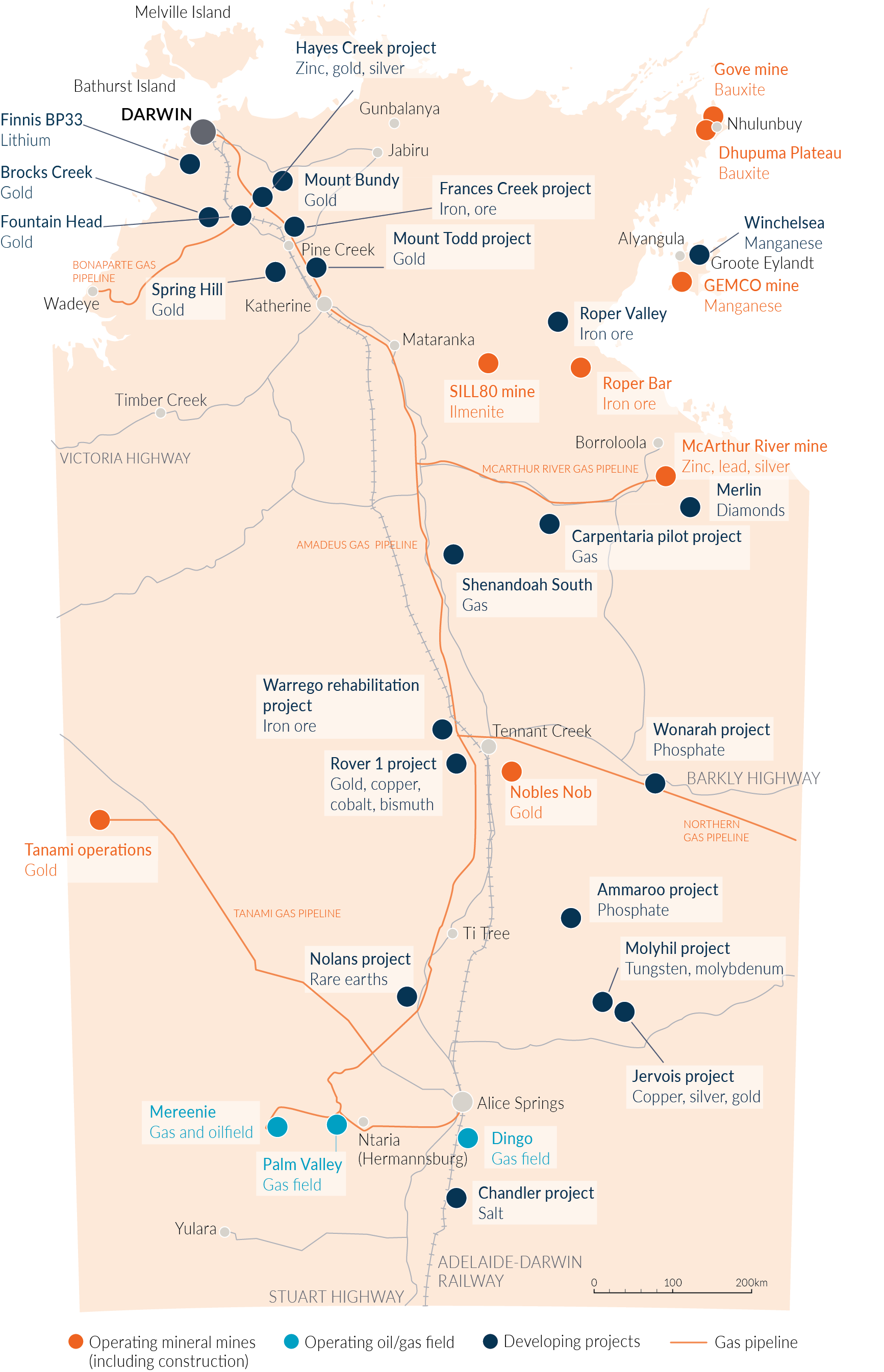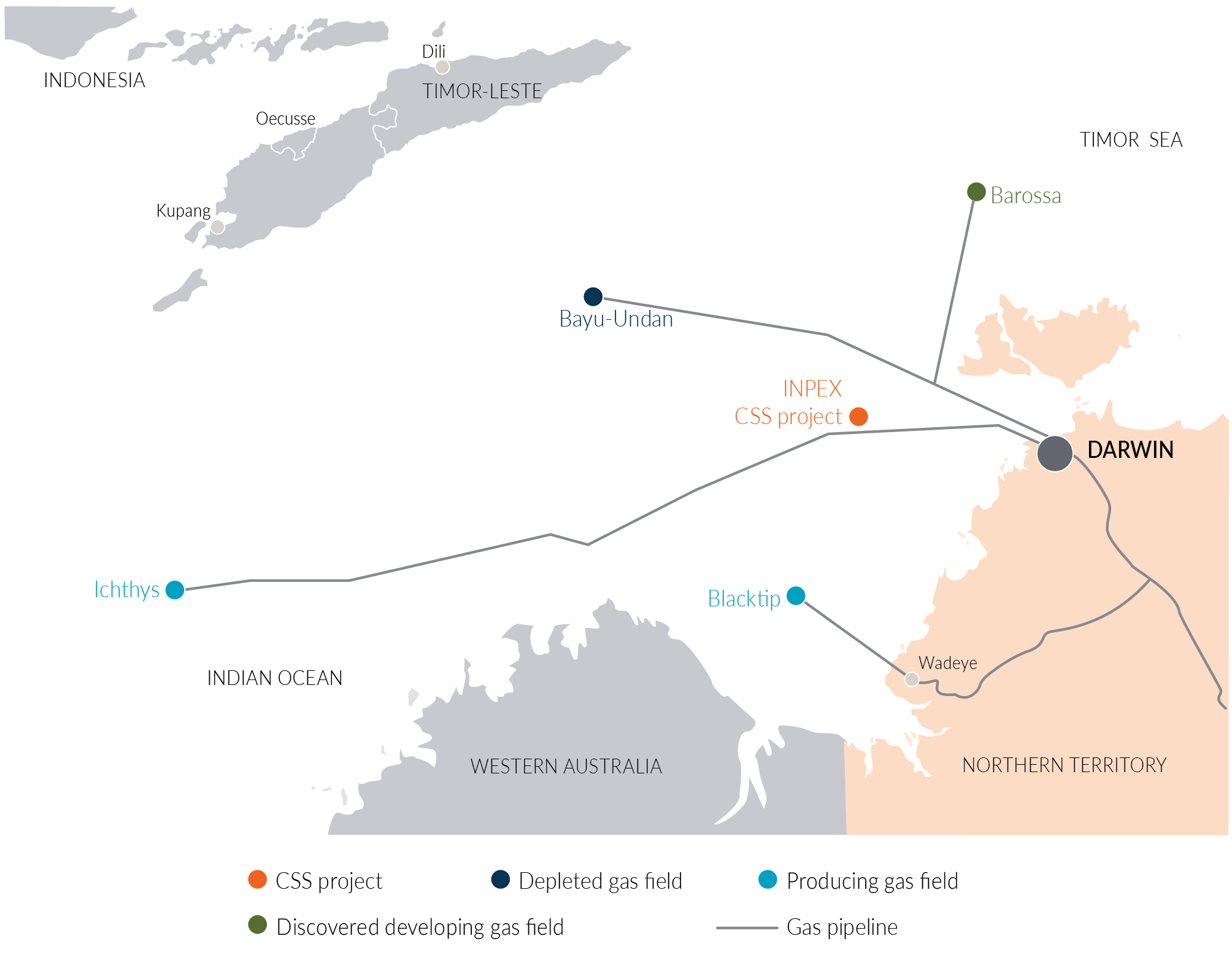Mining and manufacturing
This section provides analysis for the Northern Territory's (NT’s) mining and manufacturing industries. It explores activity for a range of commodities, minerals, manufactured products and exports. Mining and manufacturing activities that take place in the NT include mining of metal ores, petroleum production, quarrying and mining of non-metallic minerals, as well as the manufacturing of a wide range of products for both domestic and overseas consumption.
Economic contribution | Contribution to employment | Mineral production | Petroleum production | Manufacturing | Explanatory notes
This section provides analysis for the NT’s mining and manufacturing industries. It explores activity for a range of commodities, minerals, manufactured products and exports. Mining and manufacturing activities that take place in the NT include mining of metal ores, petroleum production, quarrying and mining of non-metallic minerals, as well as the manufacturing of a wide range of products for both domestic and overseas consumption.
Mining and manufacturing contribute to the NT economy through international trade, private investment and employment. The mining and manufacturing industries also have a significant impact on the NT’s construction industry as mining and manufacturing projects generally require significant levels of construction activity.
Economic contribution
- In 2023-24, the NT’s mining and manufacturing industries’ gross value added increased by 8.8% to $11.0 billion, which reflects a 9.5% increase in the mining industry and a 0.1% increase in the manufacturing sector.
- Mining and manufacturing accounted for 27.0% of NT economic output in 2023-24 (Chart 1).
Contribution to employment
- In 2023-24, mining and manufacturing employment declined by 0.5% to 7,361 persons. This reflects a 1.3% decline in mining industry employment, partially offset by a 0.5% rise in the manufacturing industry.
- Employment figures may be understated as both industries employ large numbers of fly‑in fly‑out workers from interstate, who are not included in the NT’s official employment figures.
Mineral production
- The NT’s mineral producers sold $4.3 billion worth of commodities in 2023-24, a 1.6% decline from 2022-23 (Table 1) (Chart 2).
- The NT also produces a range of non-metallic minerals such as rock, sand, gravel and quicklime that contributed about 1.7% to the value of mineral output sold in 2023-24.
- The NT’s metallic mineral commodities are predominantly exported overseas (with the exception of gold dore production, much of which is transported to the Perth mint for processing).
Map 1: Current and pending mineral and onshore petroleum production in the NT1
1 This map is produced from various sources. Department of Treasury and Finance cannot guarantee the accuracy,currency or completeness of the information. To be used as a guide only.
Source: Department of Primary Industry and Resources, Department of Treasury and Finance.
Petroleum production
- Petroleum production in the NT includes the extraction of crude oil, condensate and natural gas, as well as the production of LNG, which makes up a large proportion of the NT’s overall production.
- Onshore petroleum production in the NT occurs in the Amadeus Basin. The NT’s offshore petroleum production comprises operations in Commonwealth, state and Timor Leste waters (Map 2).
Gas
- The NT’s onshore conventional gas is sourced from the Amadeus Basin located in the Central Australia region. Production occurs at the Mereenie, Palm Valley and Dingo fields.
- In 2023-24 onshore gas production decreased by 8.3% compared to the previous year.
- Current offshore NT gas production is from the Blacktip gas field near the NT and Western Australia border and the Ichthys gas field 220 km off the coast of Western Australia.
- Previously, gas from the Bayu-Undan field was transported to onshore processing facilities to be exported overseas. However, as the Bayu-Undan field approached depletion, it shifted supply towards domestic consumption. It's replacement, the Barossa gas field, is expected to be operational from the September quarter 2025.
- Offshore gas from Blacktip is produced for the Australian domestic market, and used for electricity
generation in the Territory and sales to the east coast market. - The Ichthys field continues to produce gas primarily for export markets. It experienced an unplanned shutdown in 2024-25 and has significant maintenance activities planned for early 2025-26.
Map 2: Offshore petroleum activity1
1 This map is produced from various sources. Department of Treasury and Finance cannot guarantee the accuracy, currency or completeness of the information. To be used as a guide only.
Source: Department of Treasury and Finance.
Manufacturing
- Significant manufacturing industries in the Territory include food product manufacturing, fabricated
metal and non-metallic mineral product manufacturing. - Manufactured goods production accounted for 2.4% ($795 million) of GSP in 2023‑24 (Chart 4).
- Manufacturing employed an average of 3,301 persons in the NT in 2023-24, below the 10-year average of 3,490 persons.
- Manufacturing accounted for 2.4% of the NT’s employment in 2023-24.
Explanatory notes
- The NT’s mining and manufacturing industries’ data are reported together for the purposes of this publication as ABS includes the gross value added of manufactured LNG in the mining industry classification. Mining and manufacturing activities in the NT include mining of metal ores, petroleum production, quarrying and mining of non-metallic minerals, as well as manufacturing of a wide range of products for both domestic and overseas consumption such as concrete, wood chips and food products. The NT’s mining industry data also includes offshore petroleum production in NT waters.
- Analysis of the components of this industry is informed by a number of different data sources, including the ABS, information published in company reports and data provided by the Department of Primary Industry and Resources.

